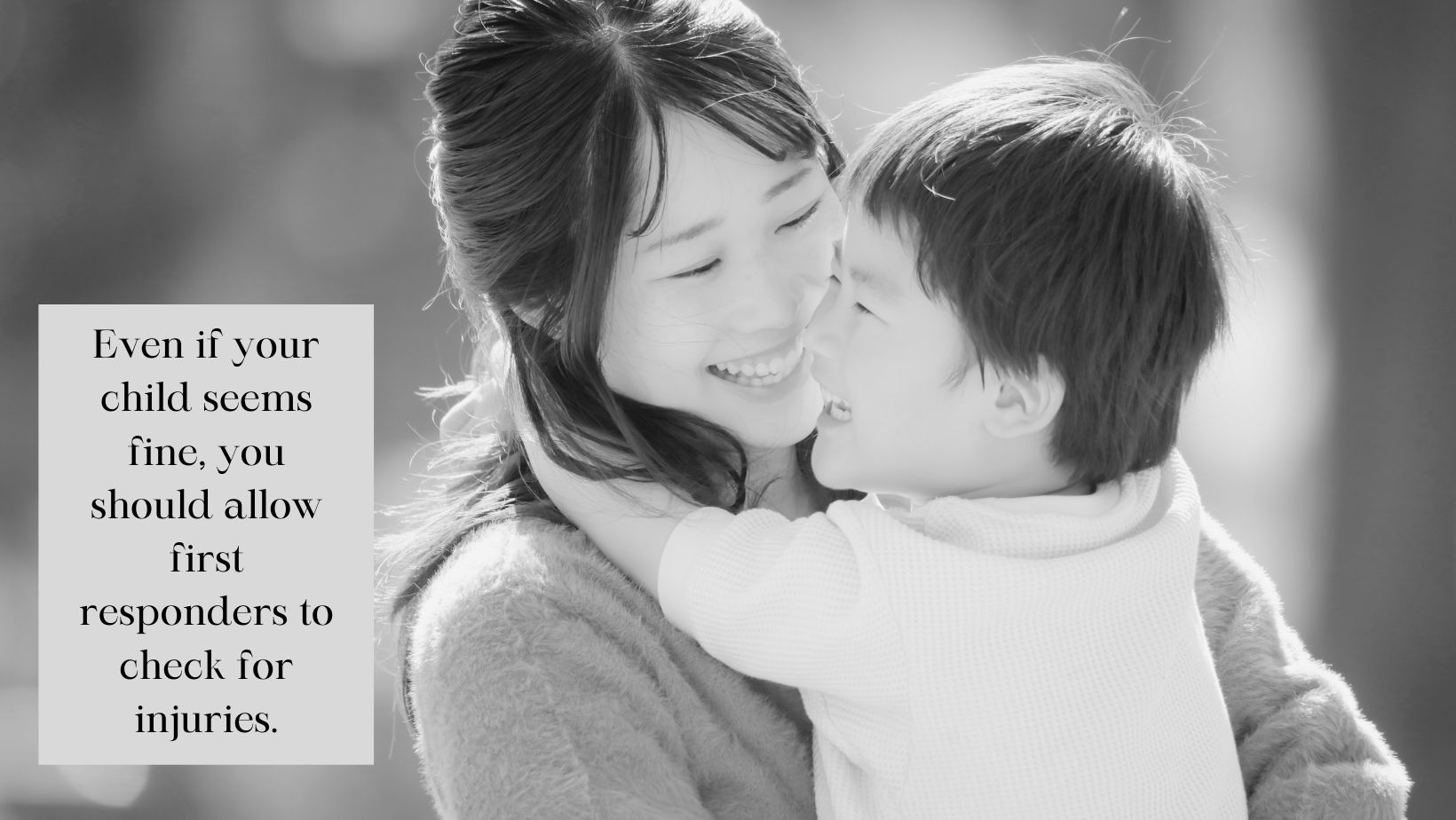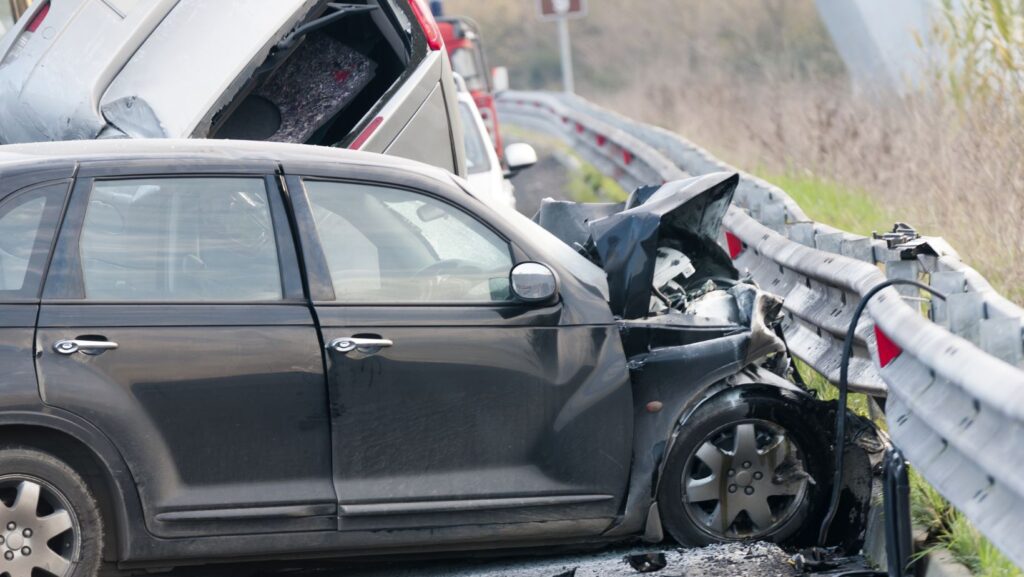When a child is in the vehicle during a collision, it’s normal for parents to panic. But even when your worst fears come to life, it’s important remain calm to help a child after a car accident. Injuries need to be assessed; help needs to be called; and information needs to be gathered to determine who was liable for the accident.
Nationwide in 2021, an estimated 162,298 children were injured in traffic accidents. Although New Mexico has car seat, booster seat, and seat belt laws to protect them, children’s developing brains and bodies are susceptible to injuries even when properly restrained. By knowing what steps to take immediately after an accident, parents can help a child get the help they need.
How to Help a Child After a Car Accident
Whether your child has been in an accident or you just want to be prepared in case it happens, the following steps are crucial.
1. Prevent Other Cars from Hitting Your Vehicle
If your car is still in the road after the crash, pull over to the shoulder. If the car is not driveable, turn on your hazard lights so approaching cars can see you.
2. Ensure that You Are Safe, Then Call for Help
Just as a flight attendant on an airplane explains, when parents have their own oxygen masks on first, they’re better able to take care of their children. After a car crash with a child in tow, adults should quickly assess their own injuries and call 911 for help right away. The dispatcher will want to know your location and the condition of everyone in the car, so it’s important to stay composed while relaying this information.
3. Assess the Child’s Injuries—But Don’t Move Them
While waiting for the police and EMTs to arrive, monitor your child for injury symptoms. Check for abnormal breathing and any bleeding from the mouth or nose. If they can talk, ask calmly if anything hurts so you can relay this to medics. Many children feel more comfortable talking to their parents than to total strangers, so getting them to tell you what hurts can save precious time.
To avoid making injuries worse, it’s best to wait until medical help arrives to remove a child from a car seat—even if there are no visible signs of distress. According to the U.S. Department of Transportation, brain injuries, whiplash, skull fractures, and contusions are common when babies and toddlers have been in car accidents. Those injuries shouldn’t be ruled out before a thorough medical exam.

4. Agree to a Medical Examination No Matter What
Even if your child seems fine, you should allow first responders to check for injuries. As mentioned above, some children’s injuries are not visible to the untrained eye. Medical technicians will check vital signs for distress, and examine the pupils for dilation and sensitivity to light, which are both signs of brain damage. If they recommend that your child go to a hospital, take their advice.
5. Gather Information About the Accident
This is especially difficult when a parent needs to help a child after a car accident, but it’s a crucial step in obtaining compensation for future medical expenses. If you’re able to, take pictures of the vehicle that hit you, or at least write down the license plate number. A police officer should be able to collect the other party’s insurance information and include it in a police report.
You should also try to recall how the accident happened. Was it raining? Did the other car hit you from behind or switch lanes without looking? Did someone stop suddenly in front of you? All of this information will come into play when determining who was liable for the accident.
6. Unless the Accident was Minor, Replace the Car Seat
The National Highway Traffic Safety Administration (NHTSA) recommends replacing a child restraint after a moderate to severe crash. If your accident meets all of the following criteria, it’s not necessary to replace the car seat.
- The vehicle was able to be driven away from the crash site
- The vehicle door nearest the safety seat was undamaged
- There were no injuries to any of the vehicle occupants
- The airbags (if present) did not deploy
- There is no visible damage to the safety seat
In moderate to severe crashes, many insurance companies will cover the cost of a new car seat. Just make sure to let your agent know you will need a replacement.
Children Deserve Compensation After a Car Accident
If a child is hurt in an accident, they deserve the very best care to alleviate their pain and suffering so they can enjoy their future. But medical expenses after an accident can put a strain on a family both financially and emotionally. By seeking a knowledgeable personal injury attorney, parents can file a claim on the child’s behalf to get compensation for medical bills and any emotional trauma due to the accident. In some cases, parents can also be compensated for time spent away from work while taking care of the injured child.
Who Will Handle My Child’s Settlement?
Once an insurance settlement is reached, the state of New Mexico takes special care to protect a child’s interests. A Guardian ad Litem (GAL), which is an unbiased attorney, will be appointed to verify that the settlement is fair and complete. The GAL will oversee the distribution of money. Any funds beyond those that cover current medical bills will most likely be invested or placed into a trust until the child has access to them at the age of 18.
In a Child’s Personal Injury Case, I Promise to Be Your Best Advocate
Along with being a licensed New Mexico attorney, I retain my licenses with the New Mexico Counseling and Therapy Board as well as my Pre-K through 12 School Counselor License. I also have a Developmental Specialist II Certificate with the New Mexico Infant Toddler Program. My goal when representing children after a car accident is to help them deal with trauma while ensuring they are awarded financially for their suffering.
During a free consultation, my team and I will review your case and determine how best to get you and your child the help you need. Contact us today to get started on your case.
